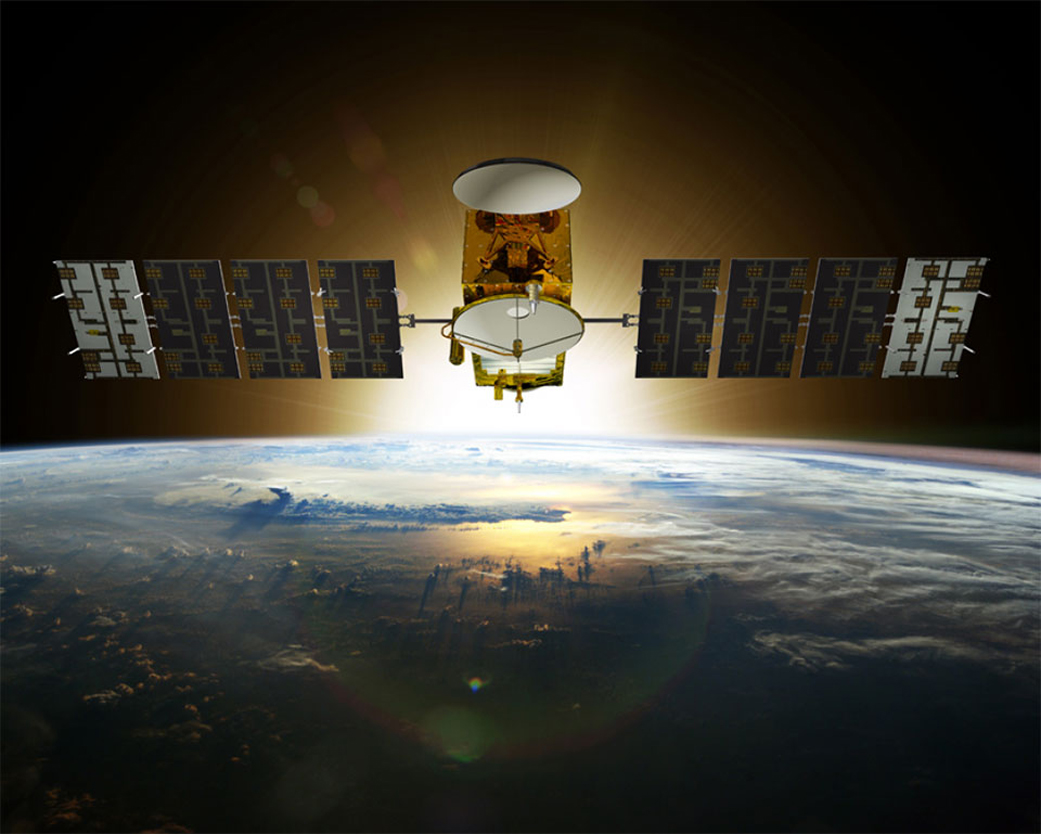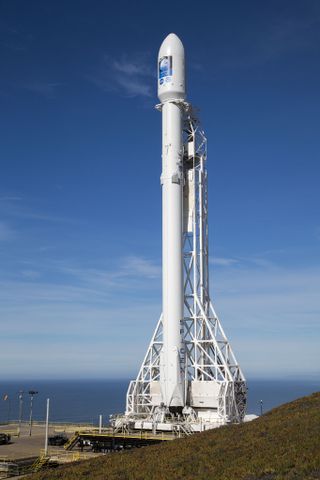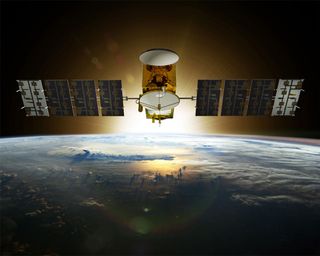SpaceX to Launch Jason-3 Satellite, Try Rocket Landing Today: Watch Live

The private spaceflight company SpaceX will launch an ocean-measuring satellite for NASA today (Jan. 17), and then attempt to land a rocket on a drone ship in the Pacific Ocean, and you can watch the flight live online.
A SpaceX Falcon 9 rocket is set to launch the Jason-3 ocean-monitoring satellite into orbit from California's Vandenberg Air Force Base at 1:42 p.m. EST (10:42 a.m. PST/1842 GMT). You can watch the launch live on Space.com starting at 11 a.m. EST (8 a.m. PST/1600 GMT), courtesy of NASA TV.
The Jason-3 satellite will examine the topography (hills and valleys) of the ocean floor. This continues research on past mission TOPEX-Poseiden (launched in 1992) and the currently operating Jason-1 (launched in 2001) and OSTM-Jason-2 (2008). [Video: How the Jason-3 Satellite Will Map Earth's Oceans]

The satellite is equipped with a radar altimeter to measure changes in sea level by as little as 1.3 inches (3.3 centimeters). This information will help track effects on the ocean such as climate change or human-induced changes. It also could improve hurricane forecasting and marine navigation, especially if investigators reach their eventual measurement goal of 1 inch (2.5 centimeters).
"Regarding the climate problem, it's now generally understood that we've entered into a new era, a new norm, marked by rapid and persistent changes to the entire whole-Earth system. But what may not be widely understood is the role of the ocean in this complex process," said Laury Miller, the program scientist for Jason-3 at the National Oceanic and Atmospheric Administration (NOAA), in a NASA press conference Friday (Jan. 15).
In that conference, Miller and NASA project scientist Josh Willis pointed out the ocean serves as a repository not only for heat on a warming planet, but also for runoff from melting glaciers. Additionally, roughly 90 percent of the heat trapped by Earth's natural greenhouse effect goes into the ocean, making it the single largest factor "in the climate change story," Miller said.
Miller pointed out that effects in one area of the Earth can often be traced to changes in the ocean half a world away. For example, the current El Nino system that is heating up much of the United States this winter is due to normally occurring trade winds being suppressed in the Pacific Ocean. Warmer waters are flowing backwards along the equator, creating higher sea surface temperatures and altering the climate of the Earth.
Get the Space.com Newsletter
Breaking space news, the latest updates on rocket launches, skywatching events and more!
Other partners on the project include the National Oceanic and Atmospheric Administration (NOAA), the European Organization for the Exploitation of Meteorological Satellites (EUMETSAT), and the French space agency, called the Center for National Space Studies (CNES).
While launching Jason-3 into orbit is SpaceX's primary goal, company representatives have confirmed that they will attempt to return the first stage of the two-stage Falcon 9 rocket back to Earth to land on a floating landing ship in the Pacific. The offshore landing attempt follows on the heels of SpaceX's successful Falcon 9 rocket landing on a land-based pad at Cape Canaveral Air Force Station in Florida.

SpaceX attempted a drone ship landing several times last year, all without success. On Friday, company representatives said there was a good chance of success for today's rocket landing try. There is a chance for slightly higher seas than desired for the landing, but it is not expected to be a substantial problem, a SpaceX representative said.
"I'm pretty hopeful," SpaceX Vice President of Mission Assurance Hans Koenigsmann said during the prelaunch press conference. "We had a really good landing last time, so things are looking good at this point in time."
SpaceX and its CEO Elon Musk have been pursuing reusable rockets as a way to dramatically lower the cost of spaceflight. After the successful Falcon 9 landing last month, Musk said he expected SpaceX would launch, land and then refly a Falcon 9 booster by the end of 2016.
Follow Elizabeth Howell @howellspace, or Space.com @Spacedotcom. We're also on Facebook and Google+. Originally published on Space.com.
Join our Space Forums to keep talking space on the latest missions, night sky and more! And if you have a news tip, correction or comment, let us know at: community@space.com.

Elizabeth Howell (she/her), Ph.D., was a staff writer in the spaceflight channel between 2022 and 2024 specializing in Canadian space news. She was contributing writer for Space.com for 10 years from 2012 to 2024. Elizabeth's reporting includes multiple exclusives with the White House, leading world coverage about a lost-and-found space tomato on the International Space Station, witnessing five human spaceflight launches on two continents, flying parabolic, working inside a spacesuit, and participating in a simulated Mars mission. Her latest book, "Why Am I Taller?" (ECW Press, 2022) is co-written with astronaut Dave Williams.